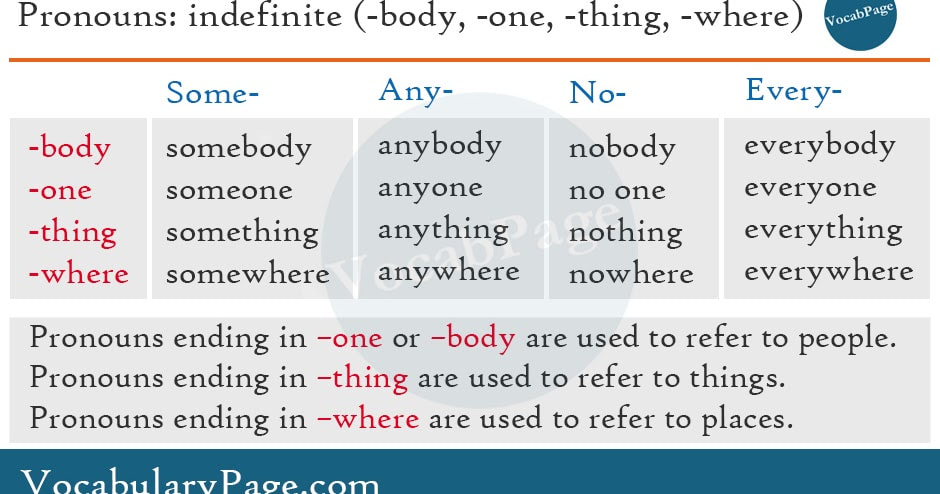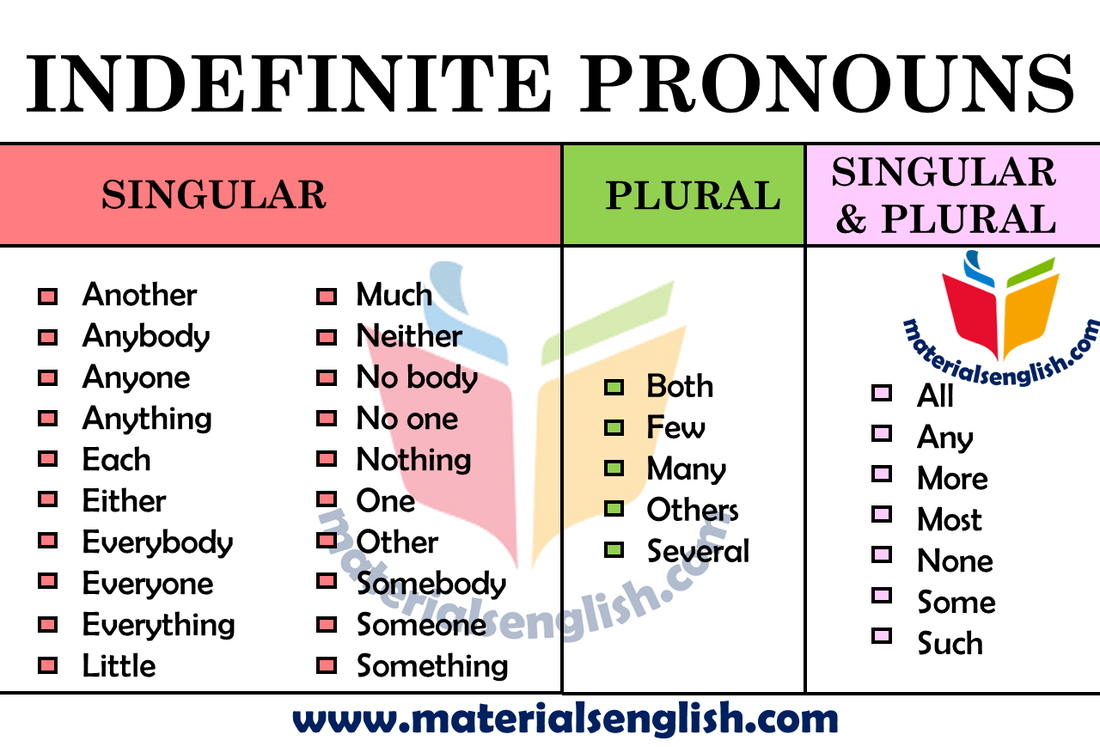 Indefinite pronouns can be a little challenging to understand and to use correctly. I find that by breaking them down into groups according to usage they are easier to learn and remember. The three groups are singular, plural, and those that can be either singular or plural. I have included several links that will help you understand these pronouns a little better. Indefinite Pronoun Review 1 Indefinite Pronoun Review 2 Indefinite Pronoun Practice 1 (The quiz/practice is found at the bottom of the page.) Indefinite Pronoun Practice 2 Indefinite Pronoun Practice 3 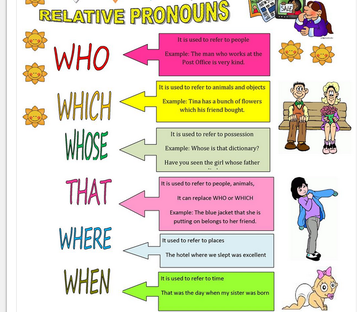 [From Grammarly.com] What Is a Relative Pronoun and How Does It Work? A relative pronoun is a word that introduces a dependent (or relative) clause and connects it to an independent clause. A clause beginning with a relative pronoun is poised to answer questions such as Which one? How many? or What kind? Who, whom, what, which, and that are all relative pronouns. Relative clauses are also sometimes referred to as adjective clauses, because they identify or give us additional information about the subject of the independent clause they relate to. To continue reading about relative pronouns, click HERE To practice using relative pronouns, click on any of the links below: Relative Pronoun Practice 1 Relative Pronoun Practice 2 Relative Pronoun Practice 3 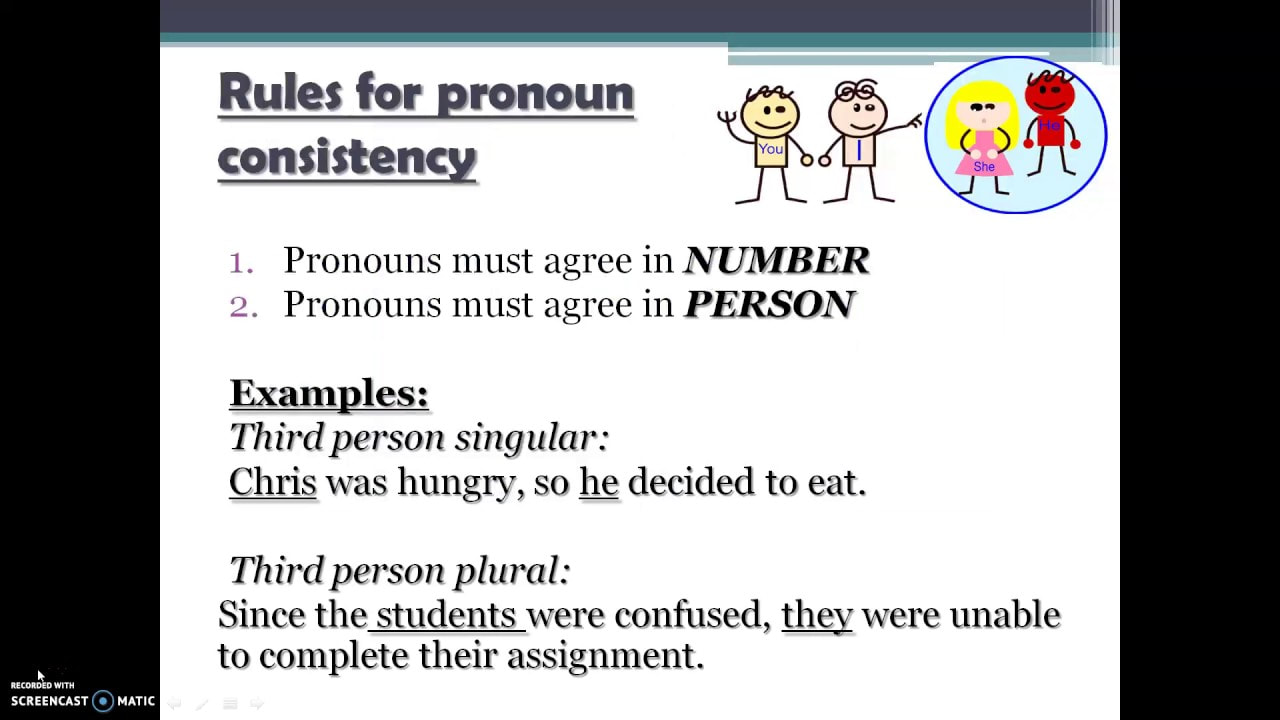 [From wordconstructions.com:] "Just as a reminder, a pronoun is a word that is used in place of a noun. So ‘he’ replace’ John’ and ‘her’ replaces ‘Suzie’s’, and so on. Pronouns are useful for
When using pronouns, make sure you maintain the same or matching pronoun throughout a sentence and paragraph. I recently read:
The writer swaps from being part of the company (by using ‘us’) to being external to the company (by using ‘their’). Which is jarring and somewhat confusing." To read more about the importance of using pronouns consistently, click here: To read even more about this issue, click here: To practice recognizing and correct incorrect pronoun usage and reference, click on the links below: Practice 1 Practice 2 Practice 3 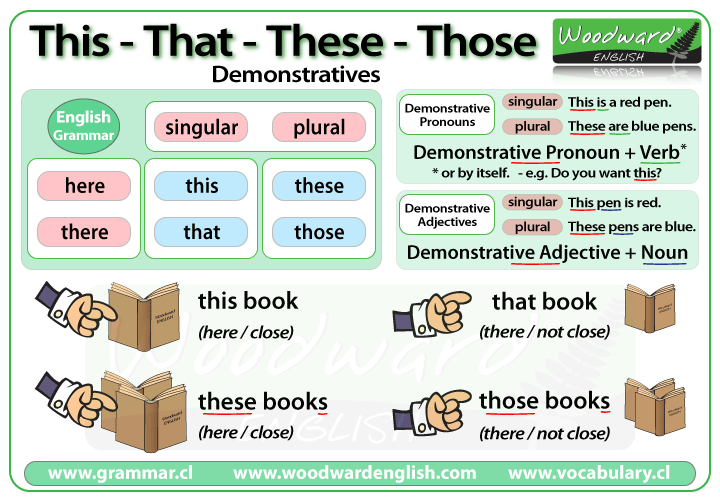 A demonstrative pronoun represents a thing or things:
For more practice using this, that, these, and those click below: 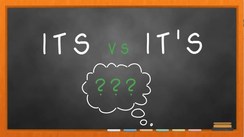 "Would you like to know the number one grammatical error? Hint: The word involved is small and it’s contained in this sentence." That’s right: its vs. it’s Yet the two rules are actually quite easy to remember." To continue reading this Grammar Tip posted by Grammarbook.com, and learn about when to use it and when to use it's, click here 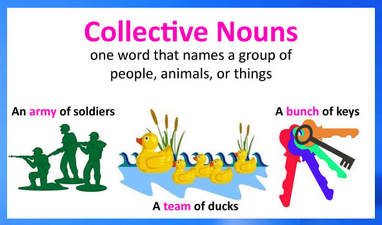 Do I use a singular or a plural verb with a collective noun? And what about when I want to use a pronoun to represent a collective noun? Do I use a singular or plural pronoun? Well, first of all, let's consider what a collective noun is. It is a noun that represents a group or a collection of things. Words like police, family, government, and committee are some examples. When using collective nouns, it is important to think about whether they require a singular or plural verb. It also important to use a correct pronoun when substituting for a collective pronoun. Here are two examples: My class always listens to its teacher during the day. Class is singular here, so I need to use the singular possessive pronoun (its). My class always turn in their assignments on time. In this instance, class is plural and I need to use a plural verb. How do you know the difference? It all depends on whether the group is acting as one or as individuals. To learn more about Collective Nouns , click here. 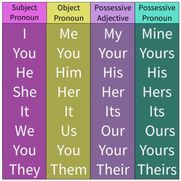 Pronouns are something that everyone uses everyday, both in speech and in writing. But not everyone uses pronouns correctly. When it comes to subject and object pronouns, it's really pretty simple. All you have to do is think about the pronoun's function in a sentence. In other words, how is it being used? Is it functioning as the subject of the sentence? If so, then you must use a subject pronoun (I, you, he, she, it, we, you, they). What if it is functioning as the object of the verb or as the object of the preposition? Then, you must use an object pronoun (me, you, him, her, it, us, you, them). To practice, click on any of the links below. Practice 1 Practice 2 Practice 3 Practice 4 Knowing when to use subject and object pronouns in a sentence is very important. It matters in both our writing and in our speaking.
Click on the links below to read about the difference and how to use each type of pronoun correctly. There are also links to games and practice exercises. Click here to review subject and object pronouns. Pronoun Practice Exercise Subject and Object Pronoun Game #1 Subject and Object Pronoun Game #2 Subject and Object Pronoun Quiz #1 Subject and Object Pronoun Quiz #2 |
AuthorMy name is Craig, and I've been teaching English for many years. I initially created this site for my students, but all English learners are welcome. I hope you find something helpful to you. Feel free to leave suggestions or ideas in the Comments section under any entry. Categories
All
|
